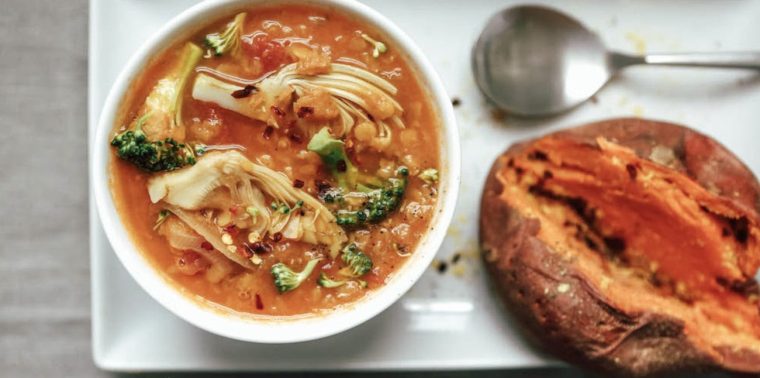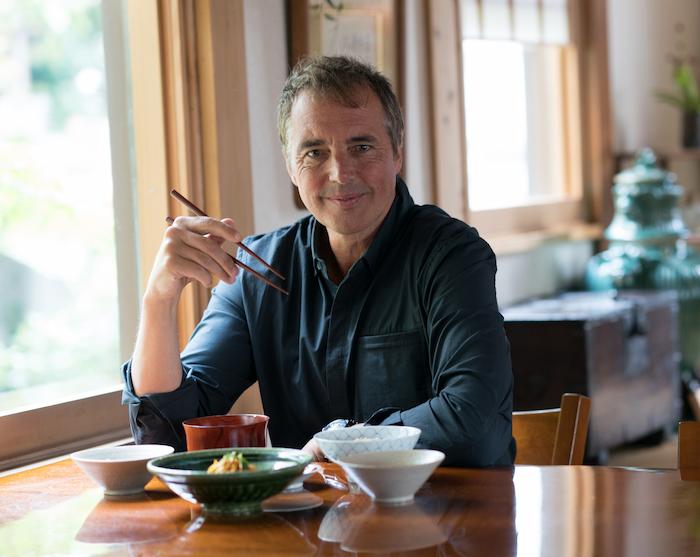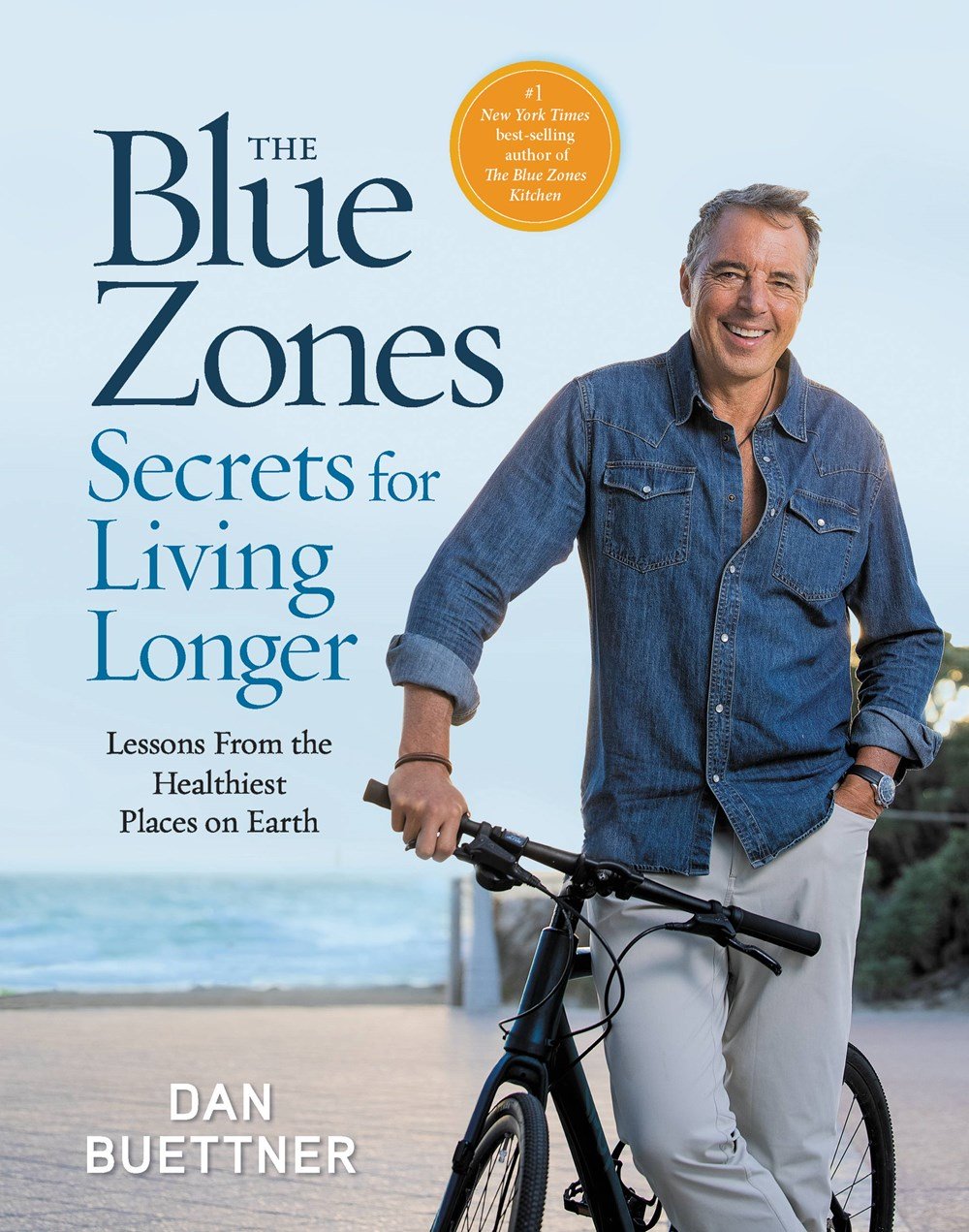I’m not a poet, but words have definitely been important to my career.
The obvious example is the fact that I’ve written several bestselling books. And I suppose that’s cool and all—but even if I’d never written a single page, my work has given me a lot of reasons to care about words and pay attention to them. Many of those reasons have come from the centenarians I’ve interviewed.
Let me put it to you this way. You know how you’re supposed to think before you speak? Centenarians are people who have had an entire century to think before they speak to me… so you’d better believe I was always going to listen closely!
These experiences have caused me to pay more attention to words, and I’ve sometimes found that re-tracing a word’s meaning from its original roots can help you see that word in a whole new light. For example: you already knew what the English word companion means, but it’s more specific and special once you know that the literal Latin translation is “someone you share bread with.”
Today’s intriguing word (also from Latin) is decision. Again, you already know what the English word means… but what does a more literal translation of the word help us to understand about decisions?
It turns out that the word decision comes from a root word meaning “to cut.” In other words, making a decision doesn’t just mean identifying your favorite option; it also means that you’re “cutting” other options away and severing yourself from those possibilities. If you come to a fork in the road and you decide to go left, you’re also eliminating your opportunity to go right (and so on).
I first bothered to dig into this because “bad decisions” are such an obvious theme in our collective health struggles. I’ll take any clue that helps me understand decisions, because so much of my work is about helping people to make healthier decisions for themselves.
I don’t yet have a magic formula for leading people to better choices, but I can tell you this much for sure:

Sometimes it’s basic ignorance, sometimes it’s a lack of context or specificity, sometimes it’s a failure to connect the dots and see the cumulative effects of unhealthy decisions—but no matter the case, people are less likely to make bad decisions when they understand what makes them bad decisions (and what to try instead).
In the first section below, I’ll be talking about one of the best small decisions you can possibly make in the kitchen. Appropriately enough, it’s a technique for (literally) cutting things safely with your kitchen knives and avoiding the sorts of ouchies that can ruin your evening, not to mention the meal you were preparing.
In the second section, I’ll be resuming our high-speed tour of American history to further explain how high-fructose corn syrup (HFCS) wound up everywhere in our food supply. The story doesn’t absolve us of our sugar habits, but it does help us to see the environment in which those excesses became so easy.
So let’s get to the sharp stuff…

I talk a lot about the importance of habits and how longevity (like we see in the blue zones) is a function of many small, repetitive things working together. If you’re like me, you might understand that explanation but still find yourself frustrated by it—frustrated because, well, where do you start and what do you do?
I think I have your answer. And I call it the 7-Day Longevity Reset.
The basics are right there in the name: it’s a 7-day program that’s meant to help you “reset” your diet and lifestyle and bring them more into alignment with what’s scientifically proven to help people live longer and healthier lives. It’s not a “boot camp” or intensive, 180-degree turnaround; it’s just seven quick daily lessons with seven simple guidelines for keeping yourself healthier for the rest of your life, plus a handy collection of resources like 17 of my favorite plant-slant recipes.
Once you buy, you have lifetime access to the materials and you can come back to them whenever you want. See for yourself and start your own reset here!

I want to talk a little bit about kitchen knives. They’re some of the most essential tools in any kitchen, but especially if you’re cooking with whole ingredients.

You can get REALLY nerdy about kitchen knives if you want to—about the steel, about the design, about sharpening methods, even about metallurgy and making your own. But with a few sparse exceptions, I’m not really interested in those kinds of granularities.
For the purposes of Eating to 100, I just want to share some basic, practical info on kitchen knives so that everybody has a baseline of good sense.
I have some Tool-related knife advice and some Technique-related knife advice, so I flipped a coin and… Technique advice it is! I’ll share the Tool-related knife advice next time in Edition 21.
There are countless different knife skills, but for today I just want to talk about one of the most important. It’s hard to master but easy to learn, and it just might save you a trip to the ER.
I’m talking about guarding your fingers, a technique that lives up to its name.
NOTE: From this point forward, I’m assuming a right-handed audience to keep the writing tidy. If you’re a southpaw, swap all instances of “left” for “right” and vice versa.
Let’s imagine a simple example where you’re repeatedly cutting downwards, like slicing carrots into coins on a cutting board.
The knife is in your right hand, so your left hand is at greater risk of knife accidents. Your left hand is holding (down) the carrots in this example—so what’s the safest way to position that left hand to avoid accidental cutting by the right hand?
First, imagine your left hand completely open while pressing the carrots down into the cutting board. The main vulnerabilities here are your thumb and forefinger, simply because they’re farthest to the right and therefore nearest the blade. If you cut the carrots this way, you have to constantly be checking that those two fingers are completely clear of the blade’s path—and it’s surprisingly hard to keep perfect track of this.
Second, imagine holding down the carrots with your left hand formed into a plank, with the fingers together and all pointing to your right. The main vulnerability here is your middle fingertip because, again, it’s farthest to the right and closest to the blade.
Notice that, in both cases above, you’re worried about your left-hand fingertips… and yet your palm is doing most of the work. It turns out that one of the best ways to get your fingertips out of harm’s way is to put them to work more directly!
Go back to that second position—except this time, curl your fingertips under until the tips of your knuckles are farthest to the right, and then press down on the carrots with your fingertips leading.
Sometimes, it makes more sense to keep your fingers together as you do this; other times, it’s better to spread your fingers apart and encircle the ingredient with your curled fingertips. (In this case, it would depend on how many carrots you’re trying to slice at a time, plus the size of your hand.)
Regardless: form your left hand this way adjacent to the line you want to cut in the carrots. When you place the blade, the knife should be leaned up against that rightmost knuckle, the sharp edge safely down below it.
This specific position is what most chefs mean by “guarding your fingers,” and it has two main benefits:
Benefit No. 1: It keeps your fingertips out of danger. This way, when you feel the left side of the knife pressed up against your knuckle, you know that (A) your knuckle is the rightmost point on your hand and (B) the blade won’t pass through anything to the left of it. Also, the knuckle itself is safe because the curled fingertips keep it suspended above the cutting edge.
Benefit No. 2: It helps to guide the knife. As stressful as this may sound at first, it’s actually a good thing that the knife spends so much time in contact with your knuckle when you’re guarding your fingers. In short, this is because it enables you to “steer” with both hands, to the benefit of both safety and the (ingredient) cuts themselves.
I say this skill is easy to learn but hard to master—and like any such skill also involving sharp objects, it’s best to take it slow and to prioritize safety. I should make it clear that this technique is valuable no matter how fast you go; allow yourself to speed up naturally through practice and never rush yourself when you’re holding something that sharp.
Having said that: the masters of this technique can be dazzlingly fast, with the right hand moving the blade up and down at the speed of a hummingbird’s wing and the left hand seeming to glide over top of the ingredient, like a magician waving it from whole to thinly-sliced in one smooth motion. Many of them can do this at full speed while staring you in the eye and holding a conversation; it’s amazing and mildly terrifying to watch (and it’s happening in a restaurant kitchen near you).
No matter how fast or slow, though, the basic steps from cut to cut go like this:
- Place the left hand (with guarded fingers) adjacent to the cutting line.
- Place the blade edge on the ingredient such that the knife is up against your guarded knuckle.
- Make the cut and slide your fingertips to the left.
- Rinse and repeat.

You’ve probably heard Marshall Goldsmith’s famous aphorism “what got you here won’t get you there,” and it’s just as true in this newsletter. For each entry in What Got Us Here, I’ll select a problematic topic in the Standard American Diet and retrace our steps through history so we can better understand our present-day problems and (hopefully) take healthier steps forward in the future.
This is Part 3 of a four-part series on high-fructose corn syrup (HFCS).
The example I discussed last time was America’s liquor binge from roughly 1800 to 1830, when we drank five times as much as we do today. Ignorance and bad decisions explain a certain amount, but the binge was only possible because of economic forces; it’s fair enough to say that “whiskey was cheap, therefore people drank more.”
The troubling thing, as I said before, is how little it took to get us hooked. Whiskey just had to be cheap and available, and then we did the rest to ourselves.
I suggested last time that refined sugar (much of it in the form of HFCS) is now playing a role like the one whiskey played two centuries ago. To list four quick comparisons between 19th-century whiskey and 21st-century sugar:
- Both whiskey and refined sugar are psychoactive, meaning they can interact directly with the brain and cause dependence or addiction.
- Both substances were/are cheap and widely available.
- Given A and B above, overconsumption of both substances is/was commonplace.
- A vocal minority did speak up to caution the public in both cases, but most people didn’t hear them (or didn’t listen) at first.
This fifth comparison is where things get complicated. I’ll have to crack open the details in Part 4 next time, but here goes: the 1800s whiskey binge and the popularization of high-fructose corn syrup (HFCS) were both results of overproduction by American agriculture.
In Part 2, I explained how this happened with whiskey. Only in America, the young “nation of farmers,” could a grain surplus accidentally become a multi-decade bender. That sounds like a joke, but I’m serious: you don’t see accidental whiskey surpluses in nations with a minority of farmers, and a full 75-90% of our population was farming at the time.
As I’ll explain more in Part 4, the introduction of high-fructose corn syrup didn’t require a high proportion of farmers so much as it required a high number of total farming acres. That’s exactly the shift that started in the period I’m covering today (1830 to 1930, give or take), so I’ll tell you how it happened.
America’s westward migration really started to pick up steam around 1830, as the whiskey binge was tapering off. Manifest destiny is a thorny subject (like most genocides), but for our agricultural and HFCS-focused purposes, I just want to emphasize two key details of America’s coast-to-coast expansion:
No. 1: It was farmers who did most of the expanding. Through the Homestead Acts, America offered much the same deal it had offered during the Revolutionary period: if you’re willing to work and you head west, the government will practically give you land. Once again, that deal was very attractive, so a lot of people took it and became (even more) farmers.
America’s proportion of farmers did drop during the 1800s, but pretty slowly; it didn’t dip below 50% of the population until 1880 or so. Meanwhile, the number of farmers continued to rise, from roughly 10 million farmers in 1830 to 23 million in 1880—and it’s not like the average farm got smaller, because…
No. 2: There’s an ungodly amount of farmable acreage between the Mississippi and the Pacific. Driving coast-to-coast takes three or four days at 75mph, and most of what you’re seeing (especially west of the Mississippi) is farmland, or once was. That’s a lot of acreage.
At present, America has something like 400 million acres of cultivated land, which is more land than most countries have, period. In other words, only 17 countries in the world have more total land than America has farmland—and thanks to westward expansion, American agriculture was ramping up to this scale pretty aggressively over the course of the 1800s.
Now, I should be clear about something. When I say that the scale of American agriculture has made certain health crises possible (like our multi-decade whiskey binge or, more recently, the proliferation of HFCS), I don’t mean to blame farmers for farming. One of the major themes of this series is unintended consequences, how economic forces can play out in unexpected ways—and we were always destined to see some big, strange side effects with a country this huge and so many farmers in it.
The next big, strange side effect of American farming: the Dust Bowl, which was a major contributor both to the Great Depression and (later, indirectly) to the popularization of HFCS.
The Dust Bowl was an inflection point in the history of American agriculture, a point whose Before and After look radically different. We’ll pick that up next time, but suffice it to say that the “game board” of American agriculture got way bigger throughout the 1800s, and then the rules governing agriculture and the players controlling the farmlands started to shift in the wake of the Depression.

Tropical Lentil Stew

Ingredients
8 cups (2 quarts) vegetable broth
1 1⁄2 cups brown, green, or black beluga lentils
2 large sweet potatoes (about 1 pound each), peeled and cut into 1⁄2-inch cubes
1 medium yellow or white onion, chopped (about 1 cup)
1 cup canned tomato sauce
2 teaspoons minced garlic
1 teaspoon ground cumin
1 teaspoon ground cinnamon
1 teaspoon dried ground ginger
1⁄2 teaspoon ground cardamom
1⁄2 teaspoon ground cloves
1⁄2 teaspoon grated nutmeg
1⁄2 teaspoon salt
1⁄2 teaspoon freshly ground black pepper
3 medium ripe bananas, peeled and cut into 1⁄2-inch-thick slices
2 cups pineapple chunks
The Method
Mix the broth, lentils, sweet potatoes, onion, tomato sauce, garlic, cumin, cinnamon, ginger, cardamom, cloves, nutmeg, salt, and pepper in a large pot or Dutch oven.
Bring to a boil over high heat.
Reduce the heat to low and simmer, uncovered, until the lentils and sweet potatoes are tender, 50 to 60 minutes.
Use an immersion blender to partially puree the soup, leaving its overall texture slightly chunky.
Or ladle about half the soup into a large blender, cover loosely with a clean kitchen towel, and blend until smooth before stirring this puree back into the pot.
Ladle into 6 serving bowls and top each with 1⁄3 cup of the banana slices and 1⁄3 cup of the pineapple chunks.
Enjoy!





